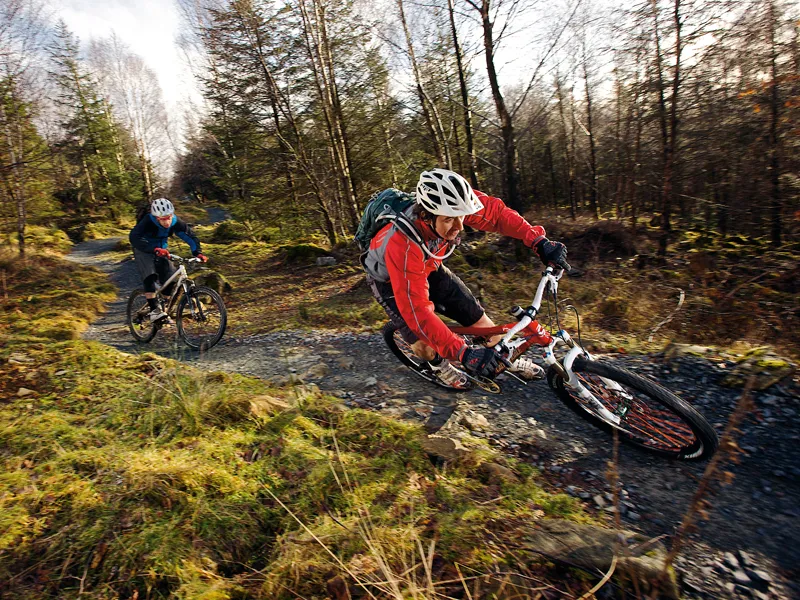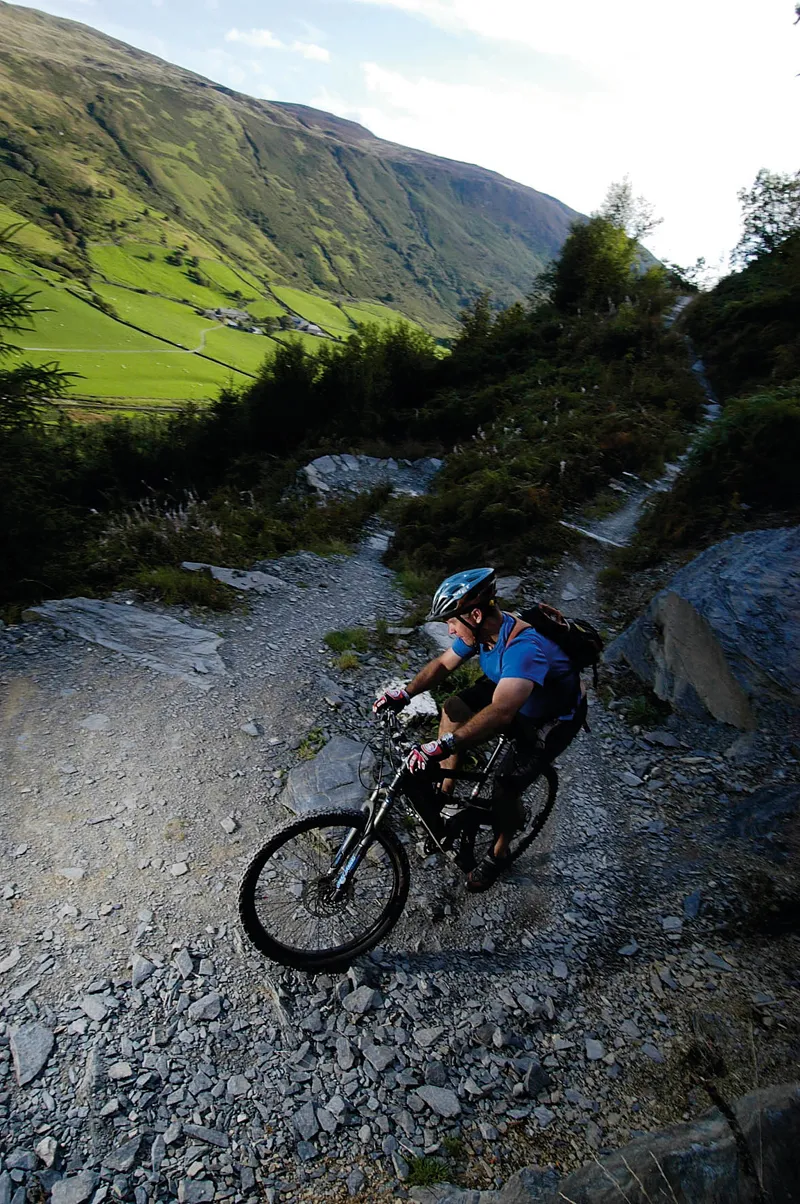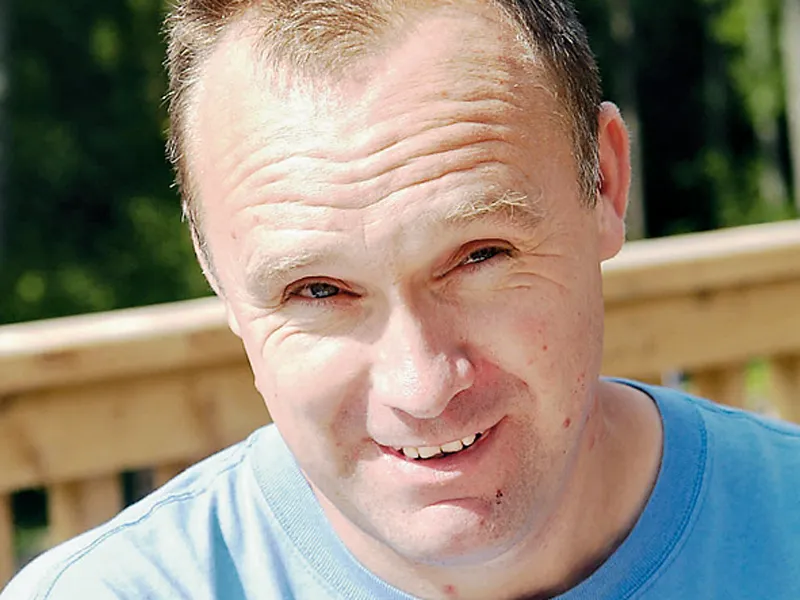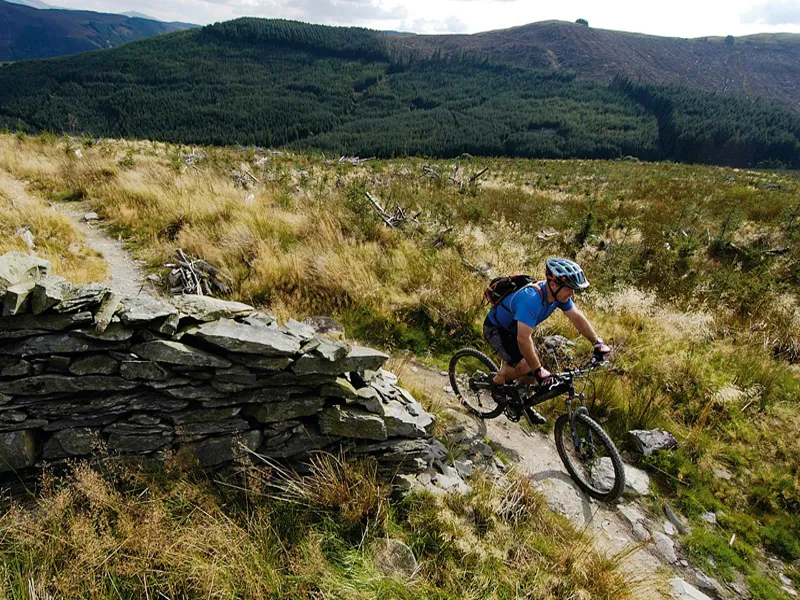Dafydd Davis is pretty modest about what he’s done for mountain biking in the UK and, most recently, as far afield as the Czech Republic, Canada, Japan and Israel. But without his early vision of the sport’s potential, off-road riding as we know it in this country might be very different today.
So where did it all start? Dafydd worked as an outdoor instructor for about 10 years before becoming a Forestry Commission recreation ranger for the Dolgellau Forest District in North Wales in 1994. One of his key responsibilities was to get more people to use Coed y Brenin forest, which then only offered a few walking routes.
“At that time there was a visitor centre in Coed y Brenin and it had between 12,000 and 14,000 visitors a year, and it was failing basically," he says. "There was nothing going on there and I thought, ‘well, what we need to do here is actually give people a good reason to come to Coed y Brenin, to get in the car and travel here’.
"Having been involved in the outdoors for so long, I always thought mountain biking was one of the most accessible adventure activities. I thought, 'what we need to do is create a product that will appeal to a mass market' and I had this idea in my head that there was a latent demand, if you like, for good quality riding that was accessible.”
Dafydd tapped into a segment of the market that was just waiting to be unlocked, and which has flourished since. “Back then if you were a mountain biker you were either a trail rider – somebody who did big rides on bridleways in the middle of nowhere and went out for the whole day – or you were a racer. There was nothing in between," he says.
"I thought, 'what we need to do is create a recreational mountain biking market'. So I started off by building trails on my own – trails that I thought people would like to ride, the kind of stuff I like to ride, which was just nice singletrack.”
Dafydd's bosses didn't share his enthusiasm for mountain biking but he carried on regardless. “They weren’t all that interested in what I was doing really," he says. "I wrote discussion papers about what I was trying to do and no-one took any notice of them, so I just carried on. At the time, recreation in the Forestry Commission was a completely different animal really – it was a bolt-on. And most foresters and forest managers weren't interested in it."
Mountain Biking UK magazine lights the fuse
The next stage in the development of Coed y Brenin came when Dafydd and Sian Roberts, who was racing cross-country for Giant at the time, took over the forest cafe. "Through her contacts we managed to get Red Bull to give us a couple of thousand pounds and we set up the first sponsored cross-country trail anywhere in the world," says Dafydd.
"It was just bits of singletrack that I’d put together, cobbled together really, and stuck some waymarkers in and an information panel. The turning point came when Chipps [Chippendale] went there with the downhill people from MBUK magazine, and they were amazed with what we’d done there. As soon as we got some magazine space, the people started to roll in and within about two years we were up to 70,000 visitors."

Coed y Brenin has spawned dozens of imitators but it's still up there with the best
Coed y Brenin's growing success brought its own problems. "The cafe was going great guns, Dafydd and Sian had established a bike hire there – everything was really starting to go. But I didn’t have enough resources to manage or develop the trails," says Dafydd. "So I developed partnerships with Drive for Youth, who did projects with long-term unemployed people. We'd have them come in and do a project for a week and they'd build some trails for us or get involved in the building process.
"Then we had guys from the Ford Motor Company on their training scheme. We had people from the Probation Service, Prince's Trust and the RAF training centre in Fairbourne. So the number of trails we had started to climb. Through Sian’s contacts we got in touch with Karrimor and they sponsored the Karrimor trail. Again, this is only small amounts of money – £4,000-£5,000 – and before you knew it the place was up to 150,000 people a year."
Even with sponsors on board and visitor numbers soaring, Dafydd was still having a hard time convincing his bosses that mountain biking was a good thing for the forest. “What a lot of people don’t realise is it wasn’t just me in the woods building stuff with a pick and shovel,” he says. “I was also having to influence policy makers within the Forestry Commission.
"By this time it had developed a life of its own and a lot of people in the Commission weren’t happy about it. They were concerned about liability, management, the way that it potentially could dominate the way the forest works. The forest was very much seen then as a timber resource so I was having to do a huge amount of work in the background, convincing senior people within the Forestry Commission.”
Spreading the message
Dafydd’s next step was to use the Coed y Brenin model – which he describes as “waymarked trails with lots of singletrack; singletrack that wasn’t too technical but was kind of challenging and easy to access” – to develop other Welsh trails. “I’d seen that there was the possibility of doing something much more significant,” he says. “So I put together what was then called the Cycling Wales Action Group, which was people from Wales Tourist Board, CTC, Sustrans and various different local authorities.
"It took a long time to pull the group together but from that I actually wrote a strategy for the Forestry Commission called Mountain Bike Wales. What I was trying to do was create the political space to make [the expansion of the Coed y Brenin model across Wales] happen. From that we put together a strategy called Moving Up a Gear in around 1998, and that was adopted by the Wales Tourist Board.
"It was the first time they’d marketed a product rather than a destination, so that was a big deal. And that enabled me then to look at developing trails in four other locations – Gwydyr, Nant yr Arian, Afan and Cwmcarn. The Welsh Assembly got hold of this strategy and the senior people in the Forestry Commission did too, and I was told, ‘Okay, you’ve got 12 months, half a million quid, deliver it’. That was a huge amount of work for me. I’d never run a big project before.”

Newer trail centres like Penmachno – which is one of Dafydd's favourite places to ride – follow the blueprint first laid out at Coed y Brenin
That project turned out to be a milestone for UK mountain biking. “It really changed the way that the Forestry Commission looked at recreation in its forests, and I also think it significantly changed the whole dynamic of the mountain bike market in Britain,” says Dafydd. “Our mountain bike market over here is much more developed than anywhere else in the world really.
"If you look at a mountain biker in the States they’re either a skilled outdoor enthusiast who can read a map and find their own way around or they’re a racer. There isn’t that enthusiast market because there isn’t that product… basically, because the product has never been developed. People forget in the UK that what we have is actually pretty unique. It doesn’t exist anywhere else."
The trail centre scene that Dafydd kick-started in Wales has now spread across the country, with dozens of venues offering waymarked woodland singletrack designed with mountain bikes in mind. Critics complain that the rise of the trail centre has sanitised the sport, but for many riders these ribbons of twisty singletrack provide a great way to get their adrenaline fix without having to worry about getting lost or encountering impenetrable sections of trail.
So, where does Dafydd himself like to ride? “I really like the Skyline trail [in Afan Forest Park],” he says. “And around here in North Wales I really like the Penmachno trails – the big ride, doing loop one and loop two, a proper big mountain bike ride. If I want to go for a short one I’ll go to Coed y Brenin and I’ve got all kind of different options I can do by linking up different bits of trail.”
As for the future, Dafydd says two things need to be done to keep the Welsh riding scene healthy. “First of all we need to make trails more accessible to more people; easier trails,” he says. “But we also still need to be developing high quality, high standard, iconic trails – I think that’s really, really important.”
So, what’s the best way to achieve this? “Trail planning and design needs to become more professionalised. It needs to be recognised as a professional discipline really, and we need to have people involved in it who have a good understanding of all of the issues, not just what it takes to build something that’s fun to ride on. It’s not all about physically building trails, it’s also about advocacy and planning.
"If you’re going to do this you need to understand about land use and countryside management first and foremost. And then you need to understand about sustainability. You can get a lad who’s a really good rider, let’s say, and is really good at driving a digger and he can build you a trail with big berms, tables and rollers but then how sustainable is it? Is it going to fall apart in a month?”

